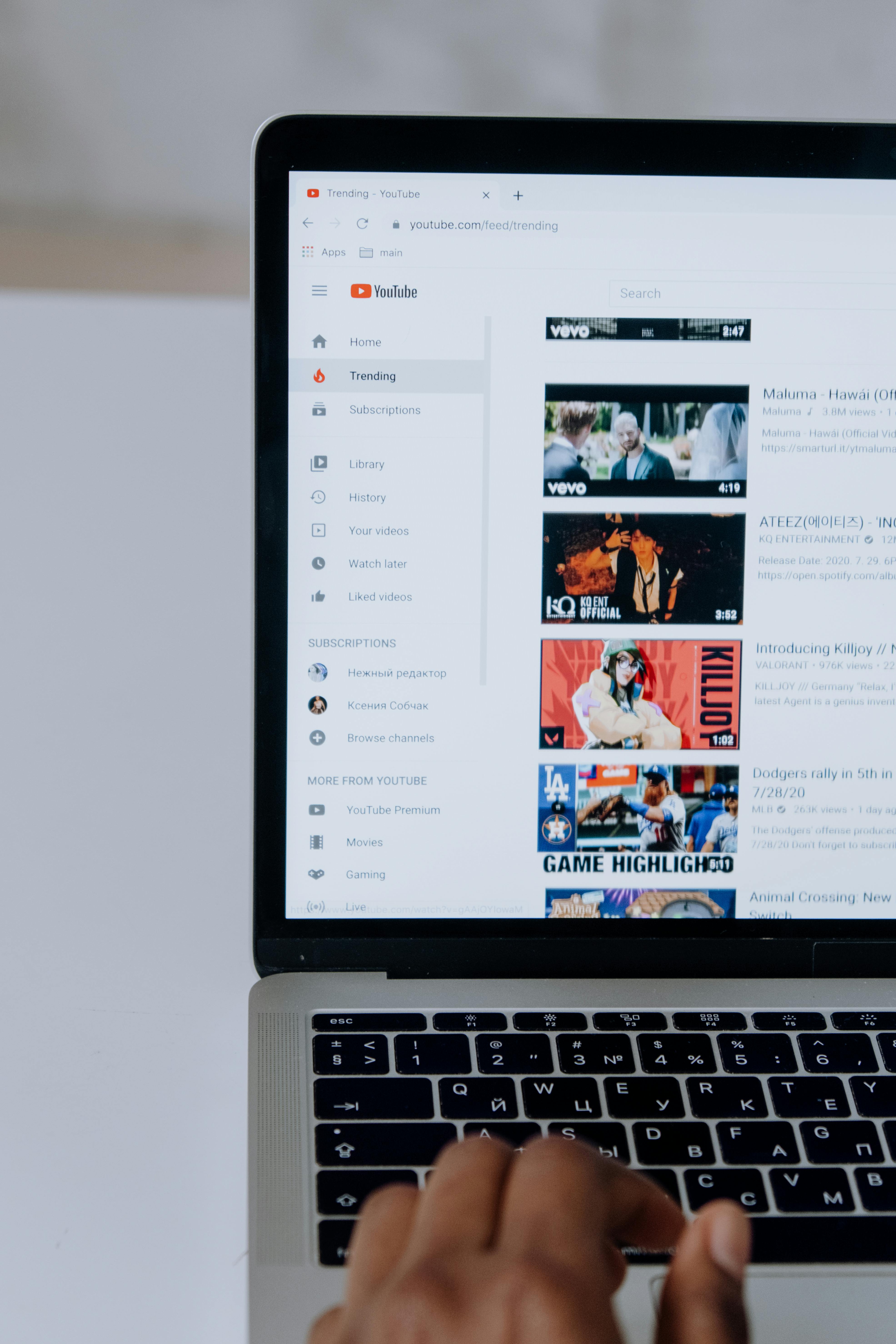Cold Outreach: 7 Steps to Get Seen and Replied To
 Jake Kitchiner
Jake Kitchiner

When most people think about cold outreach, they jump straight to writing the perfect email. They’ll debate the best hook, the tone, even the font size. But the reality is, most replies are won or lost before your recipient even reads a single word of your message.
Between you and their reply button are several silent checkpoints, understanding YouTube influencer outreach best practices can help you avoid early mistakes::
- Email providers deciding if you’re spam
- The recipient’s split-second judgment on whether you’re real
- Whether your subject line and preview text earn a click
Miss just one, and the best-crafted pitch won’t matter.
In this guide, we’ll break down seven essential steps that happen before your copy even gets read. You’ll learn:
- How to keep your emails out of spam
- How to manage your sending volume for maximum deliverability
- Why domain rating is your long-term reputation
- How to avoid the “identical blast” spam trap
- How sender name and subject line influence opens in under a second
- How preview text can win the click before the first sentence
- How to structure your email so it’s effortless to reply to
1. Protect Deliverability
If your email never makes it to the inbox, the conversation is over before it starts. Deliverability is the first hurdle in outreach — and the most overlooked.
Why it matters
Google and Microsoft handle most email traffic. They automatically decide whether your message lands in inbox or spam. They do this by looking at patterns, sender reputation, and how your account is configured. Sending cold outreach from the wrong type of account will get you flagged before your message is even seen.
Business email vs Gmail
Using a free Gmail or Outlook account is one of the fastest ways to tank deliverability. These services expect personal accounts to send personal messages, not mass cold outreach.
A business email (like you@yourdomain.com) instantly improves trust:
- For spam filters: Properly configured domains are treated as more legitimate.
- For recipients: A custom domain shows you’re a real business with a website they can check.
- For your ROI: At roughly $5/month, it’s the cheapest upgrade you can make to outreach.
Bad example:
jakebusiness123@gmail.com — unprofessional, untraceable, more likely to be ignored.
Good example:
jake@channelcrawler.com — clear brand, instantly credible.
How not to muck it up
- Don’t skip SPF, DKIM, and DMARC setup — without them, spam filters will still hesitate.
- Don’t use the same domain for cold outreach and critical business emails if you plan high volume — more on that in section 3.
Real-World Example:
You run an outreach campaign to 100 YouTubers offering a sponsorship. Using YouTube channel discovery tools ensures you target the right creators.
- Using Gmail: Day 1, you send all 100 from jakebusiness123@gmail.com. Result? Half never hit the inbox. Replies: 0.
- Using a business domain: You send from jake@channelcrawler.com after setting up SPF/DKIM/DMARC records. Result? 85+ hit the inbox. Replies: 9.
2. Manage Sending Volume
Even if you’re using a business email, spam filters watch how much you send, how quickly, and how similar those messages are.
Why it matters
If you blast 200 identical emails in one day from the same address, you’re mimicking spammer behaviour. The sending platform will throttle or block you, pushing your messages straight into spam.
Two ways to manage volume
- Low volume manual sends
- Keep sends under 20/day from each account if you’re doing it yourself.
- Use a deliverability platform
- Tools like InstantlyAI, Salesforge, or SmartLead can:
- Warm up your domain gradually (start low, ramp up)
- Spread sends across multiple email addresses
- Randomise sending times to avoid suspicious patterns
Bad example:
New domain, zero warmup, 500 identical emails sent in a day. Spam complaints pour in.
Good example:
Warmed domain, sends staggered over multiple accounts using SmartLead. 15–20/day per account, no spikes, consistent inbox placement.
How not to muck it up
- Don’t buy a new domain and send at full speed on day one — it’s a red flag.
- Don’t send at the exact same minute each day — it looks automated.
Real-World Example:
An agency signs a gaming client and needs to contact 500 YouTubers. By using YouTube channel search filters, they can prioritise creators who are more likely to engage.
- No volume control: They send all 500 identical emails in one go. Gmail flags them. By day two, every email hits spam.
- Using Salesforge: The list is split over 10 warmed domains, sending 20–30/day from each. Campaign completes in three weeks with steady replies and no domain issues.
3. Understand Domain Rating and Long-Term Impact
Deliverability isn’t just about this week’s outreach campaign — it’s about the long-term health of your domain.
Why it matters
Every time someone marks your email as spam, your domain reputation takes a hit. That doesn’t just affect cold outreach — it can hurt:
- Your SEO (Google uses domain trust in ranking signals)
- Your newsletters (marketing emails start going to spam)
- Your transactional emails (important customer messages go undelivered)
If you’re part of a larger team, damaging the main domain affects everyone.
What this means in practice
- Keep cold outreach on a separate domain if you’re sending high volumes.
- Monitor spam complaint rates — anything over 0.3% is a warning sign.
- Treat domain health like a shared asset, not just your own sending reputation.
Bad example:
Running high-volume cold campaigns from the company’s primary domain. A spike in spam complaints tanks all marketing emails.
Good example:
Using a secondary domain for cold outreach. The main company domain remains untouched and trusted for core marketing.
How not to muck it up
- Don’t ignore feedback loops or delivery reports — they’ll show you early signs of trouble.
- Don’t wait until marketing tells you newsletter open rates have halved before taking action.
Real-World Example:
A SaaS company uses their main domain for a bulk outreach push.
- Spam complaints jump to 8% in one week.
- Newsletter open rates fall from 38% to 12%.
- Their SEO lead notices a drop in rankings for branded keywords.
They now have to buy and warm up a secondary domain while the original slowly regains trust.
4. Vary Your Messaging
Spam filters and recipients both look for signs of automation. Sending the exact same message to hundreds of people is a giveaway.
Why it matters
If your outreach was truly personal, it wouldn’t be identical to 199 other emails. Variation signals authenticity and improves inbox placement.
How to add variation
- Spintax: Insert small word swaps ({Hi|Hey|Hello}) so every message is slightly different.
- Data-driven personalisation:
- Mention their most recent video by title
- Reference their niche or audience size
- Highlight a stat or sponsorship you noticed in their content
Bad example:
Hey [First Name], I work for [Company] and wanted to connect.
Good example:
Hi [First Name], I saw your video “How to Grow on YouTube in 2024”. You mentioned brand sponsorships — I think I can help line up more of those.
How not to muck it up
- Don’t just personalise the name and leave the rest identical — filters still spot the pattern.
- Don’t fake personalisation with irrelevant filler (“Saw your great content!”).
Real-World Example:
A creator outreach campaign sends identical “We love your content!” emails to 1,000 people.
- Response rate: 0.6%. When the same list is re-sent using video-specific references pulled via ChannelCrawler data:
- Response rate: 6.4%.
5. Optimise Sender Name & Subject Line
These two decide whether your email gets opened — often in less than a second.
Sender name
Your name should look like it came from a real person, not an automated system.
- Good: “Nadia Ashwood” — clean, human, friendly.
- Bad: “alex@capitalfundro...” — looks automated and corporate.
Format it as “First Last” or “First from [Company]” to balance personal and brand identity.
Subject line clarity
Why it matters: vague “curiosity” lines are spammer favourites, so recipients ignore them.
Bad examples:
- Can I run something by you?
- Quick question
- Following up
Good examples:
- Brand partnership
- Sponsorship opportunity
- Video editing
These work because they sound like internal work emails — direct, specific, and relevant to the recipient’s interests.
How not to muck it up
- Don’t try clickbait — it’s short-term gain, long-term trust loss.
- Don’t use all caps or over-punctuation (“AMAZING OFFER!!!”).
Real-World Example:
Two subject lines sent to the same group of creators:
- “Quick question” — open rate: 11%
- “Sponsorship opportunity” — open rate: 42%
Same list, same time of day — the difference was clarity and relevance.
6. Use Preview Text to Spark Curiosity
The preview text — those 10–12 words under your subject line — is a free opportunity to earn the open. Most senders waste it.
Why it matters
The subject line gets attention, but the preview convinces them to click. If the preview is generic or self-focused, it’s a lost chance.
Bad examples:
- I hope this finds you well…
- Quick question for you…
- Hi, I’m [Name] from [Company]…
These all scream “mass email” and don’t give the recipient a reason to care.
Good examples:
- I’m reaching out with a brand sponsorship opportunity. In your video…
- Noticed your latest upload hit 50k views — I have an idea…
These connect directly to the recipient and hint at relevance without giving everything away.
How not to muck it up
- Don’t repeat the subject line — you waste valuable space.
- Don’t open with your personal intro — focus on them.
Real-World Example:
Two campaigns are sent to creators in the fitness niche:
- Preview: “I hope this finds you well…” → Open rate: 18%
- Preview: “In your video ‘5-Minute Morning Workout’…” → Open rate: 39%
7. Structure the Email for Easy Replies
Once they’ve opened the email, the goal is to make replying feel effortless.
The 4-part structure
- Personalisation — Prove this email is for them specifically.
“I saw your latest upload ‘5 Mistakes New Runners Make’. Loved the pacing tip.”
- Problem agitation (without criticism) — Show you understand their challenges.
“When you start making three videos a week, it’s hard to keep up with editing, creative, and growth.”
- Social proof — Share your credibility in one line.
“I’m Jake from ChannelCrawler. We’ve helped brands like [X] and [Y] connect with the right creators.”
- Simple CTA — Make it easy to say yes.
“Are you open to a quick 5-minute call?”
If you want a head start, here are proven email templates for contacting YouTubers you can adapt for your campaigns.
Scaling without losing personalisation
- ChannelCrawler: Filter by niche, audience, and performance to target relevant leads.
- Outreach tools: Auto-insert personal data points (e.g., last video title, brand collabs).
How not to muck it up
- Don’t ask for big commitments in the first email.
- Don’t overload them with paragraphs of detail — save that for the reply.
Real-World Example:
Two versions of a video editing pitch:
- Version 1: “I’d like to set up a 1-hour meeting to discuss a possible collaboration.” → Replies: 2%
- Version 2: “Are you open to a quick 5-minute call?” → Replies: 11%
Conclusion
Cold outreach is not just about what you write — it’s about everything that happens before they even read it.
If you get these seven steps right — from protecting deliverability and varying your messaging to structuring an easy reply — you won’t just reach more people, you’ll reach them in a way that makes them want to respond.
The difference between an ignored pitch and a positive reply is rarely one big change. It’s the small, consistent adjustments at every stage that stack the odds in your favour.

